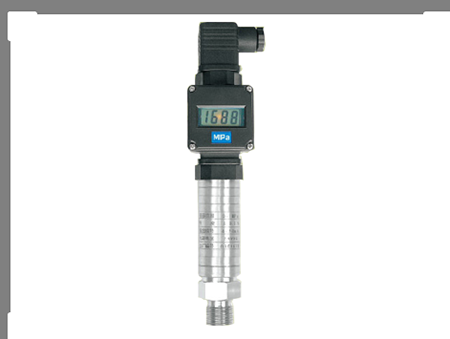Working principle of pressure sensor
 Aug 12, 2020|
Aug 12, 2020| View:769
View:769Piezoelectric pressure sensors are mainly based on the piezoelectric effect (Piezoelectric effect), which uses electrical components and other machinery to convert the pressure to be measured into electrical energy, and then performs measurement accuracy measuring instruments, such as many pressure transmitters and pressure sensors. Piezoelectric sensors cannot be used for static measurements, because when the circuit has an infinite input resistance, it can retain charge after being subjected to an external force. But this is not the case. Therefore, piezoelectric sensors can only be used for dynamic measurements. Its main piezoelectric materials are: dihydrogen phosphate, sodium potassium tartrate and quartz. The piezoelectric effect was found on quartz.
When the stress changes, the electric field changes very little, and other piezoelectric crystals will replace quartz. Potassium sodium tartrate has a large piezoelectric coefficient and piezoelectric sensitivity, but it can only be used indoors with low humidity and temperature. Dihydrogen phosphate is an artificial crystal that can be used in high humidity and high temperature environments, so its application range is very wide. With the development of technology, the piezoelectric effect has also been applied to polycrystalline. For example: piezoelectric ceramics, niobate magnesium acid piezoelectric ceramics, niobate series piezoelectric ceramics and barium titanate piezoelectric ceramics are all included.

Sensors based on the piezoelectric effect are electromechanical conversion and self-generation sensors. Its sensitive components are made of piezoelectric materials. When the piezoelectric material is subjected to an external force, an electric charge will be formed on the surface. The charge will pass through the charge amplifier to measure the amplification and impedance conversion of the circuit. It is converted into an electrical output proportional to the external force received. It is used to measure force and non-electrical physical quantities that can be converted into force, such as:
Acceleration and pressure. It has many advantages: light weight, reliable operation, simple structure, high signal-to-noise ratio, high sensitivity and large signal bandwidth. But it also has some disadvantages: some voltage materials are wet, so you need to take anti-static measures to prevent moisture, and the output current response is relatively poor, you should use a charge amplifier or a high input impedance circuit to make up for this. Disadvantages. Make the instrument work better.










View More(Total0)Comment lists